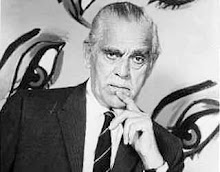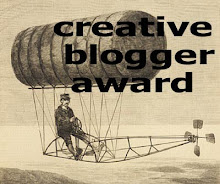
Greetings, dear reader. Today, let's forget all about that clod Freddy. May I invite you to step aboard my pop-culture time machine? We're going back a long way - back to the days of Empire, back before the First World War, back to England, August 1912. Never such innocence... Here we will pick up a copy of the popular weekly story-paper, The Gem - issue 237 to be precise. It'll cost you 1d. in the old money.

The Gem was the companion paper to The Magnet. Both had, by then, for some years been published weekly; they were not comics: both featured lengthy written stories of fictional 'public schools'. The Gem came first, in 1907, and featured Tom Merry and Co. of St. Jim's; The Magnet began shortly afterwards, in 1908, and featured Harry Wharton and Co. of Greyfriars, as well as a splendid obtuse bespectacled check-trouser wearing fat-boy character called Billy Bunter, perhaps even now, 100 years later, still dimly visible on the 'enduring fictional characters' radar. But probably any moment bound to slip off.
No young folks remember either paper now, of course, and the idea of buying a magazine that just featured column after column of type-set prose fiction, with just the occasional illustration, would probably strike them as utterly bizarre, and laughable. Which is their loss.
Greyfriars and St. Jim's were the creation of a highly prolific writer named Charles Hamilton (aka Frank Richards, Martin Clifford, and umpteen other pen-names). Not a public schoolboy himself, he went at his writing with Dickensian aplomb, hacking them out at his typewriter, but writing in a beautifully clear style, churning out thousands of stories for loads of publications for decades. He created a truly fantastic, concise, yet clearly-defined imaginary world of high comedy and gripping drama amidst the ivy-clad cloisters, and somehow breathed life into massive casts of great characters, both pupils and teachers. None of this (thankfully) can have borne much resemblance to the elitist world of real public school life, but rather represented his considerably more democratic idea of how it ought to have been. Forget your J.K. Rowlings, this is the real deal. And, to a crackpot like me, at least, though it is supposedly based in 'reality' and set in a school, Hamilton's strange fictional universe is just as fantastically other-worldly, just as coherent, and just as meticulously realised, but a million times more entertaining than anything Tolkien ever dreamed up in his dreary footnote-riddled way.
Hamilton's work, though liberal in its overall outlook, is very much a product of its time, of course, and is full of ideas, expressions, and stereotypes that might seem outrageous today, but that's part of the fun, isn't it? And let us never forget to consider the context and the times in which an artefact was produced when we appreciate all things old. Incidentally, such issues have plagued the discussion - and honest enjoyment - of Hamilton's work for decades - as can be seen in this cartoon from 1970, reprinted in a Giles collection I found in the charity shop for £1 yesterday....
Anyhow, enough of all that. Principally, I wanted to share a few dramatic moments, and the superb illustrations from this copy of The Gem, with you. Recounted in this issue was a strange, slightly melancholy tale of Tom Merry's pal, Monty Lowther. Infatuated with actress Miss Kitty Skitty, he decides to run away from school and join the theatre company with which she performs.

Above we see Monty, wearing a rather fine topper, shamefully sneaking into a theatre, to ogle Miss Kitty.
Yes, he's stage struck, and, we discover, he's covered the walls of his study back at school with "theatrical pictures and photographs". His Headmaster, Dr. Holmes, sternly demands that he take down the "absurd photographs", and orders him to burn them immediately. I'm with Dr. Holmes - you can clearly see the lady's ankles in one of those pictures. Disgraceful.

Lowther is undeterred, however, and ends up doing a bunk, to get his chance to tread the boards. He gets swizzled out of his post-office savings by an boozy, unscrupulous thespian, but does manage, finally, to make his debut with Miss Kitty. However, just as they go giddily into the opening chorus of "The Counter Girl Waltz", and they begin to skip gaily about the stage, Dr. Holmes arrives to turn his dreams to dust. I must say, the old gentleman does not look especially impressed by Lowther's effete behaviour.

At least, in the background, the stagehand's having a good laugh at it all...

Dr Holmes takes Lowther back to school, and orders him to "dismiss these absurd follies from your mind". A wise lesson for us all. Never allow the siren lure of musical theatre, or Miss Kitty Skitty's ankles, to distract you from the quiet, contemplative world of academic study. I have always lived by this maxim.
I didn't read the back up story, The School Under Canvas, a story of Gordon Gay and Co. (another Hamilton creation, I believe), because it was part of a serial (modestly billed as the most exciting school serial ever written, in fact), but the introductory illustration of good-old fashioned school discipline might serve as a useful reminder of how we have taken the wrong turn with our modern, liberal educational methods.


"Take down those absurd photographs from the walls, Lowther!" said the Head, sternly. Lowther hesitated. But there was nothing for it to obey. Dr. Holmes stood frowning, while Lowther pulled down the offending theatrical photographs. "And now put them in the grate and set fire to them!" said the Head. (See Chap. 5).
Lowther is undeterred, however, and ends up doing a bunk, to get his chance to tread the boards. He gets swizzled out of his post-office savings by an boozy, unscrupulous thespian, but does manage, finally, to make his debut with Miss Kitty. However, just as they go giddily into the opening chorus of "The Counter Girl Waltz", and they begin to skip gaily about the stage, Dr. Holmes arrives to turn his dreams to dust. I must say, the old gentleman does not look especially impressed by Lowther's effete behaviour.

At least, in the background, the stagehand's having a good laugh at it all...

Dr Holmes takes Lowther back to school, and orders him to "dismiss these absurd follies from your mind". A wise lesson for us all. Never allow the siren lure of musical theatre, or Miss Kitty Skitty's ankles, to distract you from the quiet, contemplative world of academic study. I have always lived by this maxim.
I didn't read the back up story, The School Under Canvas, a story of Gordon Gay and Co. (another Hamilton creation, I believe), because it was part of a serial (modestly billed as the most exciting school serial ever written, in fact), but the introductory illustration of good-old fashioned school discipline might serve as a useful reminder of how we have taken the wrong turn with our modern, liberal educational methods.

The German master strode savagely towards Gordon Gay and grasped him by the collar. "Mein papers!" he hissed. "Give dem to me, or---" And in his blind rage his hands closed in a grip like a vice upon the throat of the Cornstalk junior. (See p.23).
You will find this story-paper (temporarily - I borrowed it) in THE HOUSE OF COBWEBS.















I have read the Gem story in question, and fully agree with your perspective of Charles Hamilton as an entrancing author. Way more preferable than Rowling or Tolkien in my books! In fact I am a real enthusiast, and have even been fortunate enough to have acquired Hamilton's (Frank Richards) genuine Remington typewriter.
ReplyDeleteAnd don't you keep going on and on about it too.......
ReplyDeleteand why not? Its not everday one has in possession the vintage, genuine typewriter of a great author!
ReplyDeleteby the way are you chicken to show your name 'anonymous' for your uncalled for comments?